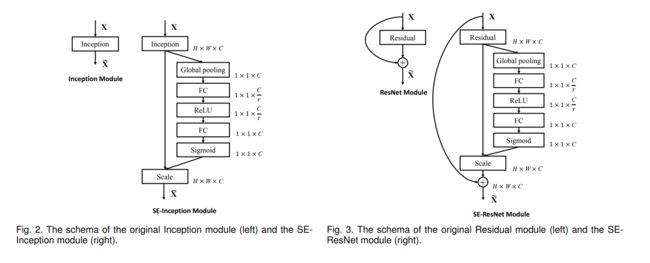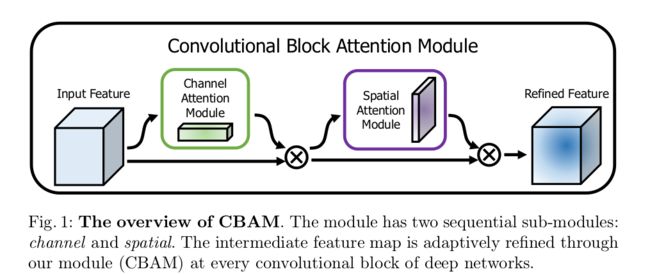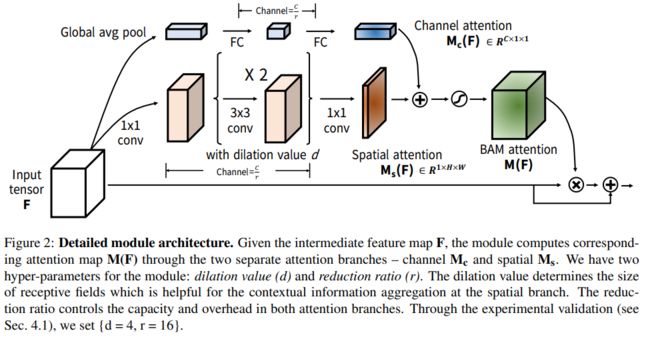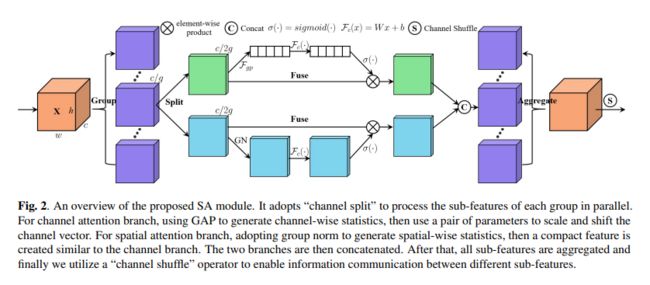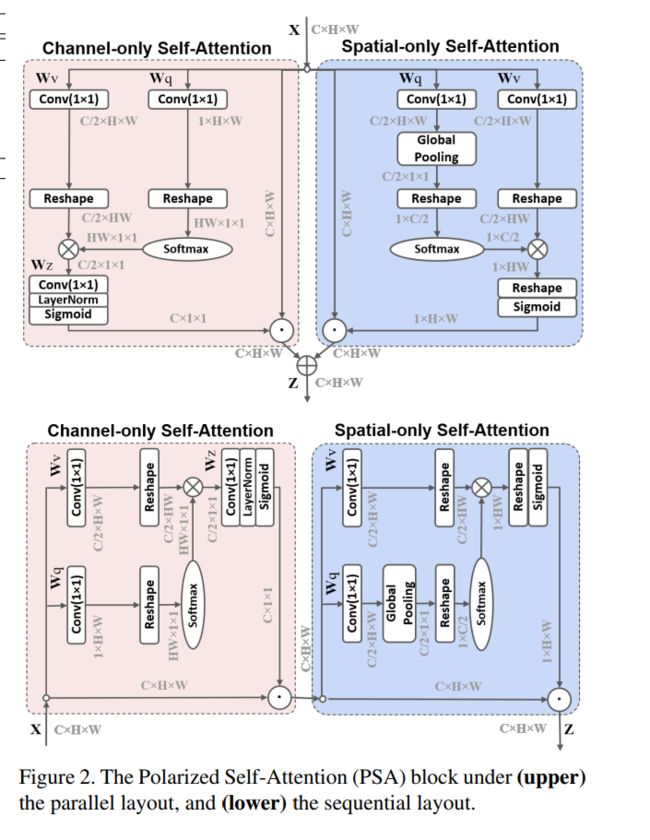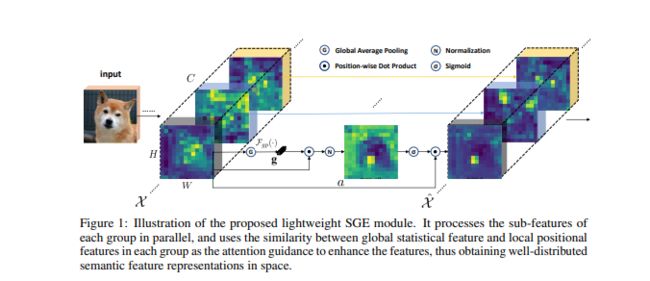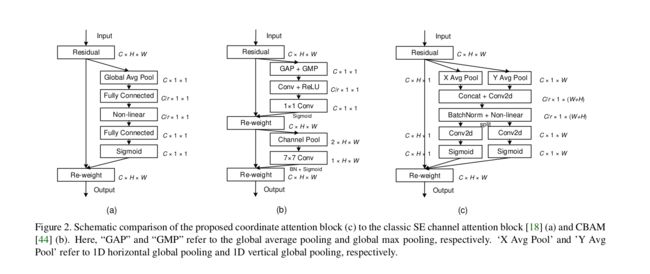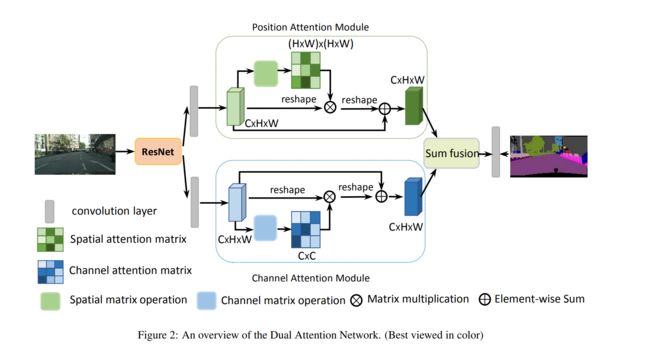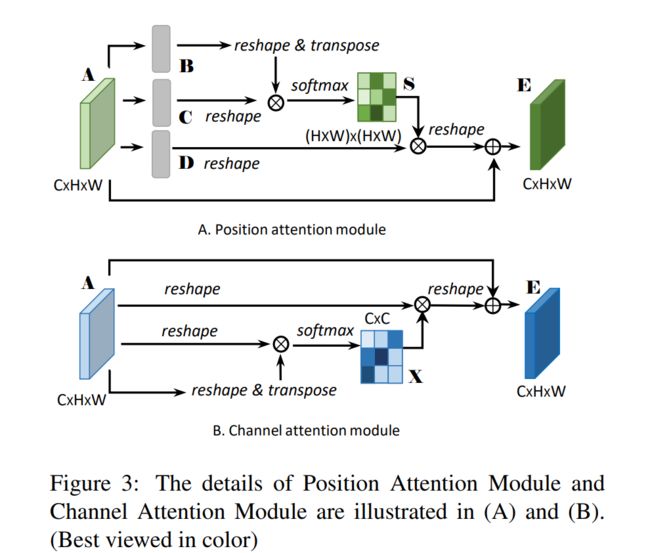聊一聊计算机视觉中常用的注意力机制 附Pytorch代码实现
聊一聊计算机视觉中常用的注意力机制以及Pytorch代码实现
注意力机制(Attention)是深度学习中常用的tricks,可以在模型原有的基础上直接插入,进一步增强你模型的性能。注意力机制起初是作为自然语言处理中的工作Attention Is All You Need被大家所熟知,从而也引发了一系列的XX is All You Need的论文命题,SENET-Squeeze-and-Excitation Networks是注意力机制在计算机视觉中应用的早期工作之一,并获得了2017年imagenet, 同时也是最后一届Imagenet比赛的冠军,后面就又出现了各种各样的注意力机制,应用在计算机视觉的任务中,今天我们就来一起聊一聊计算机视觉中常用的注意力机制以及他们对应的Pytorch代码实现,另外我还使用这些注意力机制做了一些目标检测的实验,实验效果我也一并放在博客中,大家可以一起对自己感兴趣的部分讨论讨论。
新出的手把手教程,感兴趣的兄弟们快去自己动手试试看!
手把手教你使用YOLOV5训练自己的目标检测模型-口罩检测-视频教程_dejahu的博客-CSDN博客
这里是我数据集的基本情况,这里我使用的是交通标志检测的数据集
CocoDataset Train dataset with number of images 2226, and instance counts:
+------------+-------+-----------+-------+-----------+-------+-----------------------------+-------+---------------------+-------+
| category | count | category | count | category | count | category | count | category | count |
+------------+-------+-----------+-------+-----------+-------+-----------------------------+-------+---------------------+-------+
| 0 [red_tl] | 1465 | 1 [arr_s] | 1133 | 2 [arr_l] | 638 | 3 [no_driving_mark_allsort] | 622 | 4 [no_parking_mark] | 1142 |
+------------+-------+-----------+-------+-----------+-------+-----------------------------+-------+---------------------+-------+
baseline选择的是fasterrcnn,实验的结果如下:
Average Precision (AP) @[ IoU=0.50:0.95 | area= all | maxDets=100 ] = 0.341
Average Precision (AP) @[ IoU=0.50 | area= all | maxDets=1000 ] = 0.502
Average Precision (AP) @[ IoU=0.75 | area= all | maxDets=1000 ] = 0.400
Average Precision (AP) @[ IoU=0.50:0.95 | area= small | maxDets=1000 ] = 0.115
Average Precision (AP) @[ IoU=0.50:0.95 | area=medium | maxDets=1000 ] = 0.473
Average Precision (AP) @[ IoU=0.50:0.95 | area= large | maxDets=1000 ] = 0.655
Average Recall (AR) @[ IoU=0.50:0.95 | area= all | maxDets=100 ] = 0.417
Average Recall (AR) @[ IoU=0.50:0.95 | area= all | maxDets=300 ] = 0.417
Average Recall (AR) @[ IoU=0.50:0.95 | area= all | maxDets=1000 ] = 0.417
Average Recall (AR) @[ IoU=0.50:0.95 | area= small | maxDets=1000 ] = 0.156
Average Recall (AR) @[ IoU=0.50:0.95 | area=medium | maxDets=1000 ] = 0.570
Average Recall (AR) @[ IoU=0.50:0.95 | area= large | maxDets=1000 ] = 0.726
如果大家遇到论文下载比较慢
推荐使用中科院的 arxiv 镜像: http://xxx.itp.ac.cn, 国内网络能流畅访问
简单直接的方法是, 把要访问 arxiv 链接中的域名从 https://arxiv.org 换成 http://xxx.itp.ac.cn , 比如:
从 https://arxiv.org/abs/1901.07249 改为 http://xxx.itp.ac.cn/abs/1901.07249
1. SeNet: Squeeze-and-Excitation Attention
论文地址:https://arxiv.org/abs/1709.01507
-
网络结构
对通道做注意力机制,通过全连接层对每个通道进行加权。
-
Pytorch代码
import numpy as np import torch from torch import nn from torch.nn import init class SEAttention(nn.Module): def __init__(self, channel=512, reduction=16): super().__init__() self.avg_pool = nn.AdaptiveAvgPool2d(1) self.fc = nn.Sequential( nn.Linear(channel, channel // reduction, bias=False), nn.ReLU(inplace=True), nn.Linear(channel // reduction, channel, bias=False), nn.Sigmoid() ) def init_weights(self): for m in self.modules(): if isinstance(m, nn.Conv2d): init.kaiming_normal_(m.weight, mode='fan_out') if m.bias is not None: init.constant_(m.bias, 0) elif isinstance(m, nn.BatchNorm2d): init.constant_(m.weight, 1) init.constant_(m.bias, 0) elif isinstance(m, nn.Linear): init.normal_(m.weight, std=0.001) if m.bias is not None: init.constant_(m.bias, 0) def forward(self, x): b, c, _, _ = x.size() y = self.avg_pool(x).view(b, c) y = self.fc(y).view(b, c, 1, 1) return x * y.expand_as(x) if __name__ == '__main__': input = torch.randn(50, 512, 7, 7) se = SEAttention(channel=512, reduction=8) output = se(input) print(output.shape) -
实验结果
Average Precision (AP) @[ IoU=0.50:0.95 | area= all | maxDets=100 ] = 0.338 Average Precision (AP) @[ IoU=0.50 | area= all | maxDets=1000 ] = 0.511 Average Precision (AP) @[ IoU=0.75 | area= all | maxDets=1000 ] = 0.375 Average Precision (AP) @[ IoU=0.50:0.95 | area= small | maxDets=1000 ] = 0.126 Average Precision (AP) @[ IoU=0.50:0.95 | area=medium | maxDets=1000 ] = 0.458 Average Precision (AP) @[ IoU=0.50:0.95 | area= large | maxDets=1000 ] = 0.696 Average Recall (AR) @[ IoU=0.50:0.95 | area= all | maxDets=100 ] = 0.411 Average Recall (AR) @[ IoU=0.50:0.95 | area= all | maxDets=300 ] = 0.411 Average Recall (AR) @[ IoU=0.50:0.95 | area= all | maxDets=1000 ] = 0.411 Average Recall (AR) @[ IoU=0.50:0.95 | area= small | maxDets=1000 ] = 0.163 Average Recall (AR) @[ IoU=0.50:0.95 | area=medium | maxDets=1000 ] = 0.551 Average Recall (AR) @[ IoU=0.50:0.95 | area= large | maxDets=1000 ] = 0.758
2. (有用)CBAM: Convolutional Block Attention Module
论文地址:CBAM: Convolutional Block Attention Module
-
网络结构
对通道方向上做注意力机制之后再对空间方向上做注意力机制
-
Pytorch代码
import numpy as np import torch from torch import nn from torch.nn import init class ChannelAttention(nn.Module): def __init__(self, channel, reduction=16): super().__init__() self.maxpool = nn.AdaptiveMaxPool2d(1) self.avgpool = nn.AdaptiveAvgPool2d(1) self.se = nn.Sequential( nn.Conv2d(channel, channel // reduction, 1, bias=False), nn.ReLU(), nn.Conv2d(channel // reduction, channel, 1, bias=False) ) self.sigmoid = nn.Sigmoid() def forward(self, x): max_result = self.maxpool(x) avg_result = self.avgpool(x) max_out = self.se(max_result) avg_out = self.se(avg_result) output = self.sigmoid(max_out + avg_out) return output class SpatialAttention(nn.Module): def __init__(self, kernel_size=7): super().__init__() self.conv = nn.Conv2d(2, 1, kernel_size=kernel_size, padding=kernel_size // 2) self.sigmoid = nn.Sigmoid() def forward(self, x): max_result, _ = torch.max(x, dim=1, keepdim=True) avg_result = torch.mean(x, dim=1, keepdim=True) result = torch.cat([max_result, avg_result], 1) output = self.conv(result) output = self.sigmoid(output) return output class CBAMBlock(nn.Module): def __init__(self, channel=512, reduction=16, kernel_size=49): super().__init__() self.ca = ChannelAttention(channel=channel, reduction=reduction) self.sa = SpatialAttention(kernel_size=kernel_size) def init_weights(self): for m in self.modules(): if isinstance(m, nn.Conv2d): init.kaiming_normal_(m.weight, mode='fan_out') if m.bias is not None: init.constant_(m.bias, 0) elif isinstance(m, nn.BatchNorm2d): init.constant_(m.weight, 1) init.constant_(m.bias, 0) elif isinstance(m, nn.Linear): init.normal_(m.weight, std=0.001) if m.bias is not None: init.constant_(m.bias, 0) def forward(self, x): b, c, _, _ = x.size() residual = x out = x * self.ca(x) out = out * self.sa(out) return out + residual if __name__ == '__main__': input = torch.randn(50, 512, 7, 7) kernel_size = input.shape[2] cbam = CBAMBlock(channel=512, reduction=16, kernel_size=kernel_size) output = cbam(input) print(output.shape) -
实验结果
Average Precision (AP) @[ IoU=0.50:0.95 | area= all | maxDets=100 ] = 0.364 Average Precision (AP) @[ IoU=0.50 | area= all | maxDets=1000 ] = 0.544 Average Precision (AP) @[ IoU=0.75 | area= all | maxDets=1000 ] = 0.425 Average Precision (AP) @[ IoU=0.50:0.95 | area= small | maxDets=1000 ] = 0.137 Average Precision (AP) @[ IoU=0.50:0.95 | area=medium | maxDets=1000 ] = 0.499 Average Precision (AP) @[ IoU=0.50:0.95 | area= large | maxDets=1000 ] = 0.674 Average Recall (AR) @[ IoU=0.50:0.95 | area= all | maxDets=100 ] = 0.439 Average Recall (AR) @[ IoU=0.50:0.95 | area= all | maxDets=300 ] = 0.439 Average Recall (AR) @[ IoU=0.50:0.95 | area= all | maxDets=1000 ] = 0.439 Average Recall (AR) @[ IoU=0.50:0.95 | area= small | maxDets=1000 ] = 0.185 Average Recall (AR) @[ IoU=0.50:0.95 | area=medium | maxDets=1000 ] = 0.590 Average Recall (AR) @[ IoU=0.50:0.95 | area= large | maxDets=1000 ] = 0.755
3. BAM: Bottleneck Attention Module
论文地址:https://arxiv.org/pdf/1807.06514.pdf
-
网络结构
-
Pytorch代码
import numpy as np import torch from torch import nn from torch.nn import init class Flatten(nn.Module): def forward(self, x): return x.view(x.shape[0], -1) class ChannelAttention(nn.Module): def __init__(self, channel, reduction=16, num_layers=3): super().__init__() self.avgpool = nn.AdaptiveAvgPool2d(1) gate_channels = [channel] gate_channels += [channel // reduction] * num_layers gate_channels += [channel] self.ca = nn.Sequential() self.ca.add_module('flatten', Flatten()) for i in range(len(gate_channels) - 2): self.ca.add_module('fc%d' % i, nn.Linear(gate_channels[i], gate_channels[i + 1])) self.ca.add_module('bn%d' % i, nn.BatchNorm1d(gate_channels[i + 1])) self.ca.add_module('relu%d' % i, nn.ReLU()) self.ca.add_module('last_fc', nn.Linear(gate_channels[-2], gate_channels[-1])) def forward(self, x): res = self.avgpool(x) res = self.ca(res) res = res.unsqueeze(-1).unsqueeze(-1).expand_as(x) return res class SpatialAttention(nn.Module): def __init__(self, channel, reduction=16, num_layers=3, dia_val=2): super().__init__() self.sa = nn.Sequential() self.sa.add_module('conv_reduce1', nn.Conv2d(kernel_size=1, in_channels=channel, out_channels=channel // reduction)) self.sa.add_module('bn_reduce1', nn.BatchNorm2d(channel // reduction)) self.sa.add_module('relu_reduce1', nn.ReLU()) for i in range(num_layers): self.sa.add_module('conv_%d' % i, nn.Conv2d(kernel_size=3, in_channels=channel // reduction, out_channels=channel // reduction, padding=1, dilation=dia_val)) self.sa.add_module('bn_%d' % i, nn.BatchNorm2d(channel // reduction)) self.sa.add_module('relu_%d' % i, nn.ReLU()) self.sa.add_module('last_conv', nn.Conv2d(channel // reduction, 1, kernel_size=1)) def forward(self, x): res = self.sa(x) res = res.expand_as(x) return res class BAMBlock(nn.Module): def __init__(self, channel=512, reduction=16, dia_val=2): super().__init__() self.ca = ChannelAttention(channel=channel, reduction=reduction) self.sa = SpatialAttention(channel=channel, reduction=reduction, dia_val=dia_val) self.sigmoid = nn.Sigmoid() def init_weights(self): for m in self.modules(): if isinstance(m, nn.Conv2d): init.kaiming_normal_(m.weight, mode='fan_out') if m.bias is not None: init.constant_(m.bias, 0) elif isinstance(m, nn.BatchNorm2d): init.constant_(m.weight, 1) init.constant_(m.bias, 0) elif isinstance(m, nn.Linear): init.normal_(m.weight, std=0.001) if m.bias is not None: init.constant_(m.bias, 0) def forward(self, x): b, c, _, _ = x.size() sa_out = self.sa(x) ca_out = self.ca(x) weight = self.sigmoid(sa_out + ca_out) out = (1 + weight) * x return out if __name__ == '__main__': input = torch.randn(50, 512, 7, 7) bam = BAMBlock(channel=512, reduction=16, dia_val=2) output = bam(input) print(output.shape) -
实验结果
无
4. (有用)ECA-Net: Efficient Channel Attention for Deep Convolutional Neural Networks
论文地址:https://arxiv.org/pdf/1910.03151.pdf
-
网络结构
-
Pytorch代码
import numpy as np import torch from torch import nn from torch.nn import init from collections import OrderedDict class ECAAttention(nn.Module): def __init__(self, kernel_size=3): super().__init__() self.gap = nn.AdaptiveAvgPool2d(1) self.conv = nn.Conv1d(1, 1, kernel_size=kernel_size, padding=(kernel_size - 1) // 2) self.sigmoid = nn.Sigmoid() def init_weights(self): for m in self.modules(): if isinstance(m, nn.Conv2d): init.kaiming_normal_(m.weight, mode='fan_out') if m.bias is not None: init.constant_(m.bias, 0) elif isinstance(m, nn.BatchNorm2d): init.constant_(m.weight, 1) init.constant_(m.bias, 0) elif isinstance(m, nn.Linear): init.normal_(m.weight, std=0.001) if m.bias is not None: init.constant_(m.bias, 0) def forward(self, x): y = self.gap(x) # bs,c,1,1 y = y.squeeze(-1).permute(0, 2, 1) # bs,1,c y = self.conv(y) # bs,1,c y = self.sigmoid(y) # bs,1,c y = y.permute(0, 2, 1).unsqueeze(-1) # bs,c,1,1 return x * y.expand_as(x) if __name__ == '__main__': input = torch.randn(50, 512, 7, 7) eca = ECAAttention(kernel_size=3) output = eca(input) print(output.shape) -
实验结果
2021-12-17 12:18:08,911 - mmdet - INFO - Average Precision (AP) @[ IoU=0.50:0.95 | area= all | maxDets=100 ] = 0.360 Average Precision (AP) @[ IoU=0.50 | area= all | maxDets=1000 ] = 0.545 Average Precision (AP) @[ IoU=0.75 | area= all | maxDets=1000 ] = 0.414 Average Precision (AP) @[ IoU=0.50:0.95 | area= small | maxDets=1000 ] = 0.141 Average Precision (AP) @[ IoU=0.50:0.95 | area=medium | maxDets=1000 ] = 0.489 Average Precision (AP) @[ IoU=0.50:0.95 | area= large | maxDets=1000 ] = 0.676 Average Recall (AR) @[ IoU=0.50:0.95 | area= all | maxDets=100 ] = 0.432 Average Recall (AR) @[ IoU=0.50:0.95 | area= all | maxDets=300 ] = 0.432 Average Recall (AR) @[ IoU=0.50:0.95 | area= all | maxDets=1000 ] = 0.432 Average Recall (AR) @[ IoU=0.50:0.95 | area= small | maxDets=1000 ] = 0.184 Average Recall (AR) @[ IoU=0.50:0.95 | area=medium | maxDets=1000 ] = 0.576 Average Recall (AR) @[ IoU=0.50:0.95 | area= large | maxDets=1000 ] = 0.748
5. SA-NET: SHUFFLE ATTENTION FOR DEEP CONVOLUTIONAL NEURAL NETWORKS
论文地址:https://arxiv.org/pdf/2102.00240.pdf
-
网络结构
-
Pytorch代码
import numpy as np import torch from torch import nn from torch.nn import init from torch.nn.parameter import Parameter class ShuffleAttention(nn.Module): def __init__(self, channel=512, reduction=16, G=8): super().__init__() self.G = G self.channel = channel self.avg_pool = nn.AdaptiveAvgPool2d(1) self.gn = nn.GroupNorm(channel // (2 * G), channel // (2 * G)) self.cweight = Parameter(torch.zeros(1, channel // (2 * G), 1, 1)) self.cbias = Parameter(torch.ones(1, channel // (2 * G), 1, 1)) self.sweight = Parameter(torch.zeros(1, channel // (2 * G), 1, 1)) self.sbias = Parameter(torch.ones(1, channel // (2 * G), 1, 1)) self.sigmoid = nn.Sigmoid() def init_weights(self): for m in self.modules(): if isinstance(m, nn.Conv2d): init.kaiming_normal_(m.weight, mode='fan_out') if m.bias is not None: init.constant_(m.bias, 0) elif isinstance(m, nn.BatchNorm2d): init.constant_(m.weight, 1) init.constant_(m.bias, 0) elif isinstance(m, nn.Linear): init.normal_(m.weight, std=0.001) if m.bias is not None: init.constant_(m.bias, 0) @staticmethod def channel_shuffle(x, groups): b, c, h, w = x.shape x = x.reshape(b, groups, -1, h, w) x = x.permute(0, 2, 1, 3, 4) # flatten x = x.reshape(b, -1, h, w) return x def forward(self, x): b, c, h, w = x.size() # group into subfeatures x = x.view(b * self.G, -1, h, w) # bs*G,c//G,h,w # channel_split x_0, x_1 = x.chunk(2, dim=1) # bs*G,c//(2*G),h,w # channel attention x_channel = self.avg_pool(x_0) # bs*G,c//(2*G),1,1 x_channel = self.cweight * x_channel + self.cbias # bs*G,c//(2*G),1,1 x_channel = x_0 * self.sigmoid(x_channel) # spatial attention x_spatial = self.gn(x_1) # bs*G,c//(2*G),h,w x_spatial = self.sweight * x_spatial + self.sbias # bs*G,c//(2*G),h,w x_spatial = x_1 * self.sigmoid(x_spatial) # bs*G,c//(2*G),h,w # concatenate along channel axis out = torch.cat([x_channel, x_spatial], dim=1) # bs*G,c//G,h,w out = out.contiguous().view(b, -1, h, w) # channel shuffle out = self.channel_shuffle(out, 2) return out if __name__ == '__main__': input = torch.randn(50, 512, 7, 7) se = ShuffleAttention(channel=512, G=8) output = se(input) print(output.shape) -
实验结果
Average Precision (AP) @[ IoU=0.50:0.95 | area= all | maxDets=100 ] = 0.350 Average Precision (AP) @[ IoU=0.50 | area= all | maxDets=1000 ] = 0.523 Average Precision (AP) @[ IoU=0.75 | area= all | maxDets=1000 ] = 0.401 Average Precision (AP) @[ IoU=0.50:0.95 | area= small | maxDets=1000 ] = 0.123 Average Precision (AP) @[ IoU=0.50:0.95 | area=medium | maxDets=1000 ] = 0.479 Average Precision (AP) @[ IoU=0.50:0.95 | area= large | maxDets=1000 ] = 0.662 Average Recall (AR) @[ IoU=0.50:0.95 | area= all | maxDets=100 ] = 0.424 Average Recall (AR) @[ IoU=0.50:0.95 | area= all | maxDets=300 ] = 0.424 Average Recall (AR) @[ IoU=0.50:0.95 | area= all | maxDets=1000 ] = 0.424 Average Recall (AR) @[ IoU=0.50:0.95 | area= small | maxDets=1000 ] = 0.160 Average Recall (AR) @[ IoU=0.50:0.95 | area=medium | maxDets=1000 ] = 0.576 Average Recall (AR) @[ IoU=0.50:0.95 | area= large | maxDets=1000 ] = 0.733
6. Polarized Self-Attention: Towards High-quality Pixel-wise Regression
论文地址:https://arxiv.org/abs/2107.00782
-
网络结构
-
Pytorch代码
import numpy as np import torch from torch import nn from torch.nn import init class ParallelPolarizedSelfAttention(nn.Module): def __init__(self, channel=512): super().__init__() self.ch_wv = nn.Conv2d(channel, channel // 2, kernel_size=(1, 1)) self.ch_wq = nn.Conv2d(channel, 1, kernel_size=(1, 1)) self.softmax_channel = nn.Softmax(1) self.softmax_spatial = nn.Softmax(-1) self.ch_wz = nn.Conv2d(channel // 2, channel, kernel_size=(1, 1)) self.ln = nn.LayerNorm(channel) self.sigmoid = nn.Sigmoid() self.sp_wv = nn.Conv2d(channel, channel // 2, kernel_size=(1, 1)) self.sp_wq = nn.Conv2d(channel, channel // 2, kernel_size=(1, 1)) self.agp = nn.AdaptiveAvgPool2d((1, 1)) def forward(self, x): b, c, h, w = x.size() # Channel-only Self-Attention channel_wv = self.ch_wv(x) # bs,c//2,h,w channel_wq = self.ch_wq(x) # bs,1,h,w channel_wv = channel_wv.reshape(b, c // 2, -1) # bs,c//2,h*w channel_wq = channel_wq.reshape(b, -1, 1) # bs,h*w,1 channel_wq = self.softmax_channel(channel_wq) channel_wz = torch.matmul(channel_wv, channel_wq).unsqueeze(-1) # bs,c//2,1,1 channel_weight = self.sigmoid(self.ln(self.ch_wz(channel_wz).reshape(b, c, 1).permute(0, 2, 1))).permute(0, 2, 1).reshape( b, c, 1, 1) # bs,c,1,1 channel_out = channel_weight * x # Spatial-only Self-Attention spatial_wv = self.sp_wv(x) # bs,c//2,h,w spatial_wq = self.sp_wq(x) # bs,c//2,h,w spatial_wq = self.agp(spatial_wq) # bs,c//2,1,1 spatial_wv = spatial_wv.reshape(b, c // 2, -1) # bs,c//2,h*w spatial_wq = spatial_wq.permute(0, 2, 3, 1).reshape(b, 1, c // 2) # bs,1,c//2 spatial_wq = self.softmax_spatial(spatial_wq) spatial_wz = torch.matmul(spatial_wq, spatial_wv) # bs,1,h*w spatial_weight = self.sigmoid(spatial_wz.reshape(b, 1, h, w)) # bs,1,h,w spatial_out = spatial_weight * x out = spatial_out + channel_out return out class SequentialPolarizedSelfAttention(nn.Module): def __init__(self, channel=512): super().__init__() self.ch_wv = nn.Conv2d(channel, channel // 2, kernel_size=(1, 1)) self.ch_wq = nn.Conv2d(channel, 1, kernel_size=(1, 1)) self.softmax_channel = nn.Softmax(1) self.softmax_spatial = nn.Softmax(-1) self.ch_wz = nn.Conv2d(channel // 2, channel, kernel_size=(1, 1)) self.ln = nn.LayerNorm(channel) self.sigmoid = nn.Sigmoid() self.sp_wv = nn.Conv2d(channel, channel // 2, kernel_size=(1, 1)) self.sp_wq = nn.Conv2d(channel, channel // 2, kernel_size=(1, 1)) self.agp = nn.AdaptiveAvgPool2d((1, 1)) def forward(self, x): b, c, h, w = x.size() # Channel-only Self-Attention channel_wv = self.ch_wv(x) # bs,c//2,h,w channel_wq = self.ch_wq(x) # bs,1,h,w channel_wv = channel_wv.reshape(b, c // 2, -1) # bs,c//2,h*w channel_wq = channel_wq.reshape(b, -1, 1) # bs,h*w,1 channel_wq = self.softmax_channel(channel_wq) channel_wz = torch.matmul(channel_wv, channel_wq).unsqueeze(-1) # bs,c//2,1,1 channel_weight = self.sigmoid(self.ln(self.ch_wz(channel_wz).reshape(b, c, 1).permute(0, 2, 1))).permute(0, 2, 1).reshape( b, c, 1, 1) # bs,c,1,1 channel_out = channel_weight * x # Spatial-only Self-Attention spatial_wv = self.sp_wv(channel_out) # bs,c//2,h,w spatial_wq = self.sp_wq(channel_out) # bs,c//2,h,w spatial_wq = self.agp(spatial_wq) # bs,c//2,1,1 spatial_wv = spatial_wv.reshape(b, c // 2, -1) # bs,c//2,h*w spatial_wq = spatial_wq.permute(0, 2, 3, 1).reshape(b, 1, c // 2) # bs,1,c//2 spatial_wq = self.softmax_spatial(spatial_wq) spatial_wz = torch.matmul(spatial_wq, spatial_wv) # bs,1,h*w spatial_weight = self.sigmoid(spatial_wz.reshape(b, 1, h, w)) # bs,1,h,w spatial_out = spatial_weight * channel_out return spatial_out if __name__ == '__main__': input = torch.randn(1, 512, 7, 7) psa = SequentialPolarizedSelfAttention(channel=512) output = psa(input) print(output.shape) -
实验结果
2021-12-16 20:30:36,981 - mmdet - INFO - Average Precision (AP) @[ IoU=0.50:0.95 | area= all | maxDets=100 ] = 0.346 Average Precision (AP) @[ IoU=0.50 | area= all | maxDets=1000 ] = 0.522 Average Precision (AP) @[ IoU=0.75 | area= all | maxDets=1000 ] = 0.385 Average Precision (AP) @[ IoU=0.50:0.95 | area= small | maxDets=1000 ] = 0.123 Average Precision (AP) @[ IoU=0.50:0.95 | area=medium | maxDets=1000 ] = 0.474 Average Precision (AP) @[ IoU=0.50:0.95 | area= large | maxDets=1000 ] = 0.676 Average Recall (AR) @[ IoU=0.50:0.95 | area= all | maxDets=100 ] = 0.422 Average Recall (AR) @[ IoU=0.50:0.95 | area= all | maxDets=300 ] = 0.422 Average Recall (AR) @[ IoU=0.50:0.95 | area= all | maxDets=1000 ] = 0.422 Average Recall (AR) @[ IoU=0.50:0.95 | area= small | maxDets=1000 ] = 0.170 Average Recall (AR) @[ IoU=0.50:0.95 | area=medium | maxDets=1000 ] = 0.570 Average Recall (AR) @[ IoU=0.50:0.95 | area= large | maxDets=1000 ] = 0.743
7. Spatial Group-wise Enhance: Improving Semantic Feature Learning in Convolutional Networks
论文地址:https://arxiv.org/pdf/1905.09646.pdf
-
网络结构
主要是用在语义分割上,所以在检测上的效果一般,没有带来多少提升
-
Pytorch代码
import numpy as np import torch from torch import nn from torch.nn import init class SpatialGroupEnhance(nn.Module): def __init__(self, groups): super().__init__() self.groups = groups self.avg_pool = nn.AdaptiveAvgPool2d(1) self.weight = nn.Parameter(torch.zeros(1, groups, 1, 1)) self.bias = nn.Parameter(torch.zeros(1, groups, 1, 1)) self.sig = nn.Sigmoid() self.init_weights() def init_weights(self): for m in self.modules(): if isinstance(m, nn.Conv2d): init.kaiming_normal_(m.weight, mode='fan_out') if m.bias is not None: init.constant_(m.bias, 0) elif isinstance(m, nn.BatchNorm2d): init.constant_(m.weight, 1) init.constant_(m.bias, 0) elif isinstance(m, nn.Linear): init.normal_(m.weight, std=0.001) if m.bias is not None: init.constant_(m.bias, 0) def forward(self, x): b, c, h, w = x.shape x = x.view(b * self.groups, -1, h, w) # bs*g,dim//g,h,w xn = x * self.avg_pool(x) # bs*g,dim//g,h,w xn = xn.sum(dim=1, keepdim=True) # bs*g,1,h,w t = xn.view(b * self.groups, -1) # bs*g,h*w t = t - t.mean(dim=1, keepdim=True) # bs*g,h*w std = t.std(dim=1, keepdim=True) + 1e-5 t = t / std # bs*g,h*w t = t.view(b, self.groups, h, w) # bs,g,h*w t = t * self.weight + self.bias # bs,g,h*w t = t.view(b * self.groups, 1, h, w) # bs*g,1,h*w x = x * self.sig(t) x = x.view(b, c, h, w) return x if __name__ == '__main__': input = torch.randn(50, 512, 7, 7) sge = SpatialGroupEnhance(groups=8) output = sge(input) print(output.shape) -
实验结果
2021-12-16 21:39:42,785 - mmdet - INFO - Average Precision (AP) @[ IoU=0.50:0.95 | area= all | maxDets=100 ] = 0.342 Average Precision (AP) @[ IoU=0.50 | area= all | maxDets=1000 ] = 0.516 Average Precision (AP) @[ IoU=0.75 | area= all | maxDets=1000 ] = 0.381 Average Precision (AP) @[ IoU=0.50:0.95 | area= small | maxDets=1000 ] = 0.117 Average Precision (AP) @[ IoU=0.50:0.95 | area=medium | maxDets=1000 ] = 0.474 Average Precision (AP) @[ IoU=0.50:0.95 | area= large | maxDets=1000 ] = 0.652 Average Recall (AR) @[ IoU=0.50:0.95 | area= all | maxDets=100 ] = 0.415 Average Recall (AR) @[ IoU=0.50:0.95 | area= all | maxDets=300 ] = 0.415 Average Recall (AR) @[ IoU=0.50:0.95 | area= all | maxDets=1000 ] = 0.415 Average Recall (AR) @[ IoU=0.50:0.95 | area= small | maxDets=1000 ] = 0.155 Average Recall (AR) @[ IoU=0.50:0.95 | area=medium | maxDets=1000 ] = 0.565 Average Recall (AR) @[ IoU=0.50:0.95 | area= large | maxDets=1000 ] = 0.718
8. Coordinate Attention for Efficient Mobile Network Design
论文地址:https://arxiv.org/abs/2103.02907
-
网络结构
主要应用在轻量级网络上,在resnet系列上效果不好。
-
Pytorch代码
import torch import torch.nn as nn import torch.nn.functional as F class h_sigmoid(nn.Module): def __init__(self, inplace=True): super(h_sigmoid, self).__init__() self.relu = nn.ReLU6(inplace=inplace) def forward(self, x): return self.relu(x + 3) / 6 class h_swish(nn.Module): def __init__(self, inplace=True): super(h_swish, self).__init__() self.sigmoid = h_sigmoid(inplace=inplace) def forward(self, x): return x * self.sigmoid(x) class CoordAtt(nn.Module): def __init__(self, inp, oup, reduction=32): super(CoordAtt, self).__init__() self.pool_h = nn.AdaptiveAvgPool2d((None, 1)) self.pool_w = nn.AdaptiveAvgPool2d((1, None)) mip = max(8, inp // reduction) self.conv1 = nn.Conv2d(inp, mip, kernel_size=1, stride=1, padding=0) self.bn1 = nn.BatchNorm2d(mip) self.act = h_swish() self.conv_h = nn.Conv2d(mip, oup, kernel_size=1, stride=1, padding=0) self.conv_w = nn.Conv2d(mip, oup, kernel_size=1, stride=1, padding=0) def forward(self, x): identity = x n, c, h, w = x.size() x_h = self.pool_h(x) x_w = self.pool_w(x).permute(0, 1, 3, 2) y = torch.cat([x_h, x_w], dim=2) y = self.conv1(y) y = self.bn1(y) y = self.act(y) x_h, x_w = torch.split(y, [h, w], dim=2) x_w = x_w.permute(0, 1, 3, 2) a_h = self.conv_h(x_h).sigmoid() a_w = self.conv_w(x_w).sigmoid() out = identity * a_w * a_h return out -
实验结果
2021-12-16 19:04:16,776 - mmdet - INFO - Average Precision (AP) @[ IoU=0.50:0.95 | area= all | maxDets=100 ] = 0.340 Average Precision (AP) @[ IoU=0.50 | area= all | maxDets=1000 ] = 0.516 Average Precision (AP) @[ IoU=0.75 | area= all | maxDets=1000 ] = 0.386 Average Precision (AP) @[ IoU=0.50:0.95 | area= small | maxDets=1000 ] = 0.127 Average Precision (AP) @[ IoU=0.50:0.95 | area=medium | maxDets=1000 ] = 0.457 Average Precision (AP) @[ IoU=0.50:0.95 | area= large | maxDets=1000 ] = 0.632 Average Recall (AR) @[ IoU=0.50:0.95 | area= all | maxDets=100 ] = 0.408 Average Recall (AR) @[ IoU=0.50:0.95 | area= all | maxDets=300 ] = 0.408 Average Recall (AR) @[ IoU=0.50:0.95 | area= all | maxDets=1000 ] = 0.408 Average Recall (AR) @[ IoU=0.50:0.95 | area= small | maxDets=1000 ] = 0.162 Average Recall (AR) @[ IoU=0.50:0.95 | area=medium | maxDets=1000 ] = 0.546 Average Recall (AR) @[ IoU=0.50:0.95 | area= large | maxDets=1000 ] = 0.716
9. Global Attention Mechanism: Retain Information to Enhance Channel-Spatial Interactions
论文地址: https://arxiv.org/abs/2112.05561
-
网络结构
计算量特别大,效果一般
-
Pytorch代码
class GAM_Attention(nn.Module): def __init__(self, in_channels, out_channels, rate=4): super(GAM_Attention, self).__init__() self.channel_attention = nn.Sequential( nn.Linear(in_channels, int(in_channels / rate)), nn.ReLU(inplace=True), nn.Linear(int(in_channels / rate), in_channels) ) self.spatial_attention = nn.Sequential( nn.Conv2d(in_channels, int(in_channels / rate), kernel_size=7, padding=3), nn.BatchNorm2d(int(in_channels / rate)), nn.ReLU(inplace=True), nn.Conv2d(int(in_channels / rate), out_channels, kernel_size=7, padding=3), nn.BatchNorm2d(out_channels) ) def forward(self, x): # print(x) b, c, h, w = x.shape x_permute = x.permute(0, 2, 3, 1).view(b, -1, c) x_att_permute = self.channel_attention(x_permute).view(b, h, w, c) x_channel_att = x_att_permute.permute(0, 3, 1, 2) x = x * x_channel_att x_spatial_att = self.spatial_attention(x).sigmoid() out = x * x_spatial_att # print(out) return out -
实验结果
2021-12-16 16:14:20,693 - mmdet - INFO - Average Precision (AP) @[ IoU=0.50:0.95 | area= all | maxDets=100 ] = 0.350 Average Precision (AP) @[ IoU=0.50 | area= all | maxDets=1000 ] = 0.530 Average Precision (AP) @[ IoU=0.75 | area= all | maxDets=1000 ] = 0.399 Average Precision (AP) @[ IoU=0.50:0.95 | area= small | maxDets=1000 ] = 0.131 Average Precision (AP) @[ IoU=0.50:0.95 | area=medium | maxDets=1000 ] = 0.481 Average Precision (AP) @[ IoU=0.50:0.95 | area= large | maxDets=1000 ] = 0.683 Average Recall (AR) @[ IoU=0.50:0.95 | area= all | maxDets=100 ] = 0.424 Average Recall (AR) @[ IoU=0.50:0.95 | area= all | maxDets=300 ] = 0.424 Average Recall (AR) @[ IoU=0.50:0.95 | area= all | maxDets=1000 ] = 0.424 Average Recall (AR) @[ IoU=0.50:0.95 | area= small | maxDets=1000 ] = 0.171 Average Recall (AR) @[ IoU=0.50:0.95 | area=medium | maxDets=1000 ] = 0.575 Average Recall (AR) @[ IoU=0.50:0.95 | area= large | maxDets=1000 ] = 0.745
更多注意力
参考:https://github.com/xmu-xiaoma666/External-Attention-pytorch
另外还有一些用在语义分割上面的结构,这里就不测试了,大家可以自行下去测试
双路注意力机制-DANET
论文标题:Fu_Dual_Attention_Network_for_Scene_Segmentation
论文地址:https://openaccess.thecvf.com/content_CVPR_2019/papers/Fu_Dual_Attention_Network_for_Scene_Segmentation_CVPR_2019_paper.pdf
时间:2019
相当于之前是并行的结构,现在改成了串行的结构然后做特征的concat
位置注意力-CCNET
在上面的danet上改的,主要是解决计算量的问题, 通过十字交叉的结构来解决
论文标题:CCNet: Criss-Cross Attention for Semantic Segmentation
论文地址:https://openaccess.thecvf.com/content_ICCV_2019/papers/Huang_CCNet_Criss-Cross_Attention_for_Semantic_Segmentation_ICCV_2019_paper.pdf
时:2019
找到我
你可以通过这些方式来寻找我。
B站:肆十二-
CSDN:肆十二
知乎:肆十二
微博:肆十二-
现在关注以后就是老朋友喽!
![]()

